Hindu pilgrimage sites in India
In Hindu religion and spirituality, the pilgrimage has great significance. Members of the faith participate in the following types of pilgrimage. The pilgrimage to each sacred site has its own religious significance.
Holy Place: Himalayan Char Dham - Badrinath, Kedarnath, Gangotri, and Yamunotri. Varanasi/Kashi, Allahabad/Prayag, Haridwar-Rishikesh, Mathura-Vrindavan, Somnath and Ayodhya.
Holy Fairs: The Kumbh Mela (the "pitcher festival") is one of the holiest of Hindu pilgrimages that is held every three years; the location is rotated among the four cities of Allahabad, Haridwar, Nashik, and Ujjain. Shravani Mela of Deoghar and Pitrapaksha Mela of Gaya are also notable holy fairs.
Holy Temples: the Char Dham of Rameswaram, Dwarka, Puri, and Badrinath. Katra, home to the Vaishno Devi temple; Puri home to Vaishnava Jagannath temple and Rath Yatra celebration; Tirumala - Tirupati, home to the Tirumala Venkateswara Temple; Sabarimala home to Swami Ayyappan; the Shakti Peethas; the twelve Jyotirlingas; the seven Sapta Puri; the Pancha Bhoota Stalam.
Mahamaham: the world-famous festival in temple town of Kumbakonam which is celebrated once in 12 years. More than 25 lakhs of people gather here from different parts of the world.
Holy Deity : Kuladaivat Hindu families have their own family patron deity. This deity is common to a lineage, a clan or a locality.
Tombs and Samadhis of Saints: Alandi, Samadhi of Dnyaneshwar: Mantralayam, samadhi of Raghavendra Tirtha, Belur Math which enshrine that Holy remains of Sri Ramakrishna, Sri Sarada Devi, Swami Vivekananda Puri, and other direct Disciples of Sri Ramakrishna, Tulsi Ghat, Varanasi where Saint Tulsidas left his mortal coil, Samadhi Mandir of Saint Kabir at Gorakhpur, near Varanasi, Panchaganga Ghat, Varanasi where Trailanga Swami lived and left his mortal body, Karar Ashram, Puri where Swami Sri Yukteswar Giri, attained the Mahasamadhi[1].
List
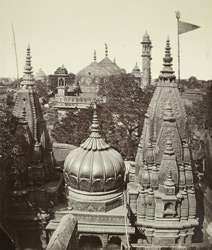
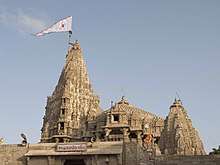
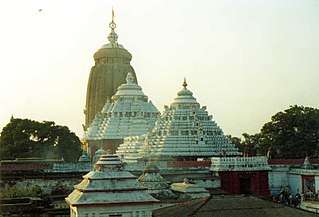
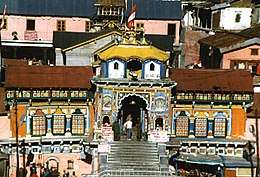
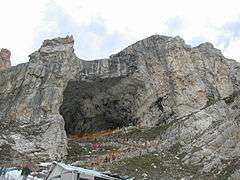
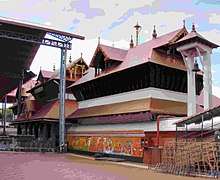
- Ahobilam, Andhra Pradesh
- Alandi, Maharashtra
- Allahabad (Prayag), Uttar Pradesh
- Amararama, Andhra Pradesh
- Amaravathi village, Guntur district
- Amarkantak, Madhya Pradesh
- Amarnath, Jammu and Kashmir
- Ambejogai Yogeshwari
- Anandashram, Kanhangad
- Annamalai Hill
- Arasavalli
- Attukal Pongala
- Avittathur
- Ayodhya
- Baba Dhansar
- Badrinath
- Basistha Ashram
- Batu Caves
- Belur Math
- Bhadrachalam
- Bhavani
- Bhimashankar Temple
- Chidambaram, Tamil Nadu
- Chitrakuta
- Dakor
- Baba Baidyanath Dham, Deoghar
- Dharmasthala
- Draksharama
- Dwarka
- Dwaraka Pītha
- Gajanan Maharaj
- Gangotri
- Gaya, India
- Ghatikachala
- Gnana Saraswati Temple, Basar
- Godachi Veerbhadhreshwar Temple
- Golden Temple, Sripuram
- Gor Khuttree
- Gosaikunda
- Govardhana matha
- Govindavadi
- Guruvayur, Kerala
- Hajo, Assam
- Haridwar
- Hemkund
- Horanadu, Karnataka
- Idagunji
- Jayrambati
- Jejur Khandoba
- Jonnawada
- Jyotirlinga
- Jyotirmath
- Kalaram Temple
- Kaleshwaram
- Kamarpukur
- Kancheepuram, Tamil Nadu
- Kanipakam
- Kanyakumari
- Kataragama
- Kateel
- Katra
- Kedarnath
- Kodlamane Shree Vishnumurthy Temple
- Kolhapur Mahalaxmi
- Kollur
- Konark
- Ksheerarama
- Kuchadri Venkateshwara Swamy temple
- Kukke Subramanya Temple
- Kumararama
- Kumbakonam
- Kumbh Mela
- Kurukshetra
- Lingaraj Temple
- Madurai Meenakshi Temple
- Maha Devi Tirth temple in Kullu
- Mahur
- Maihar Devi
- Majuli[2]
- Mandher Devi temple in Mandhradevi
- Manikaran
- Mantralayam
- Mathura
- Mayapur
- Mount Abu
- Mount Kailash
- Mukhalingam
- Nainativu
- Narasimha Konda
- Narayanalayam
- Nashik
- Nellitheertha
- Omkareshwar
- Padmavathi Temple, Tiruchanur
- Palani
- Pancharama Kshetras
- Panchavati
- Pandharpur
- Parashuram Kund, Assam
- Pithapuram
- Puri
- Pushkar
- Puttaparthy Sri Sathya Sai
- Ramatheertham
- Rameswaram
- Rishikesh
- Ryali
- Sabarimala Mandala-kaala Pilgrimage
- Sabarimalai, kerala
- Sammakka Saralamma Jatara
- Sangam, Srikakulam district
- Saptashrangi
- Shanti Ashram, Assam
- Shirdi
- Shivkhori
- Simhachalam
- Sivagiri, Kerala
- Somanath
- Somarama
- Sri Kurmam
- Srikalahasti
- Sringeri Sharada Peetham
- Srirangam
- Srisailam
- Swamithoppe
- Talapady
- Thanjavur
- Thiruchendur
- Thirumanthamkunnu Temple
- Thiruvananthapuram
- Thrissur
- Tirtha and Kshetra
- Tirupati
- Trimbakeshwar Shiva Temple
- Tuljapur Bhavani temple
- Udupi
- Ujjain
- Vaishno Devi
- Vani, Nashik
- Varanasi
- Vemulavada
- Vijayawada
- Vindhayachal
- Vrindavan
- Vyshakha Mahotsavam of Kottiyoor
- Yadagirigutta Temple
- Yamunotri
There are four Dhams and twelve Jyotirlings along with 51 Shakti Peeths in India. The twelve Jyotirlings are Kedarnath distance 18 km from Gorikund, reached by trek or helicopter service by Uttara Tourism.
See also
References
- ↑ Yogananda, Paramahansa (1997). Autobiography of a Yogi, 1997 Anniversary Edition p. 383. Self-Realization Fellowship (Founded by Yogananda) http://www.yogananda-srf.org/,
- ↑ Majuli, River Island. "Largest river island". Guinness World Records. Retrieved 6 September 2016.
Further reading
- Bhardwaj, Surinder Mohan (1983). Hindu Places of Pilgrimage in India: A Study in Cultural Geography. University of California Press. ISBN 978-0-520-04951-2.
- Lochtefeld, James G. (28 December 2009). God's Gateway : Identity and Meaning in a Hindu Pilgrimage Place: Identity and Meaning in a Hindu Pilgrimage Place. Oxford University Press. ISBN 978-0-19-974158-8.
- Jacobsen, Knut A. (5 March 2013). Pilgrimage in the Hindu Tradition: Salvific Space. Routledge. ISBN 978-0-415-59038-9.
